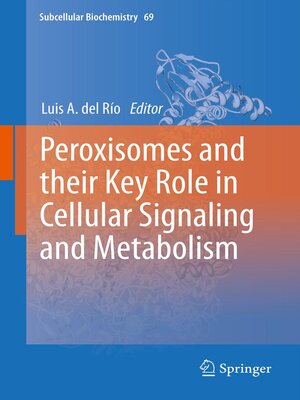Peroxisomes and their Key Role in Cellular Signaling and Metabolism
ebook ∣ Subcellular Biochemistry
By Luis A. del Río

Sign up to save your library
With an OverDrive account, you can save your favorite libraries for at-a-glance information about availability. Find out more about OverDrive accounts.
Find this title in Libby, the library reading app by OverDrive.



Search for a digital library with this title
Title found at these libraries:
| Library Name | Distance |
|---|---|
| Loading... |
Peroxisomes are a class of ubiquitous and dynamic single membrane-bounded cell organelles, devoid of DNA, with an essentially oxidative type of metabolism. In recent years it has become increasingly clear that peroxisomes are involved in a range of important cellular functions in almost all eukaryotic cells. In higher eukaryotes, including humans, peroxisomes catalyze ether phospholipids biosynthesis, fatty acid alpha-oxidation, glyoxylate detoxification, etc, and in humans peroxisomes are associated with several important genetic diseases. In plants, peroxisomes carry out the fatty acid beta-oxidation, photorespiration, metabolism of ROS, RNS and RSS, photomorphogenesis, biosynthesis of phytohormones, senescence, and defence against pathogens and herbivores. In recent years it has been postulated a possible contribution of peroxisomes to cellular signaling. In this volume an updated view of the capacity and function of peroxisomes from human, animal, fungal and plant origin as cell generators of different signal molecules involved in distinct processes of high physiological importance is presented.







